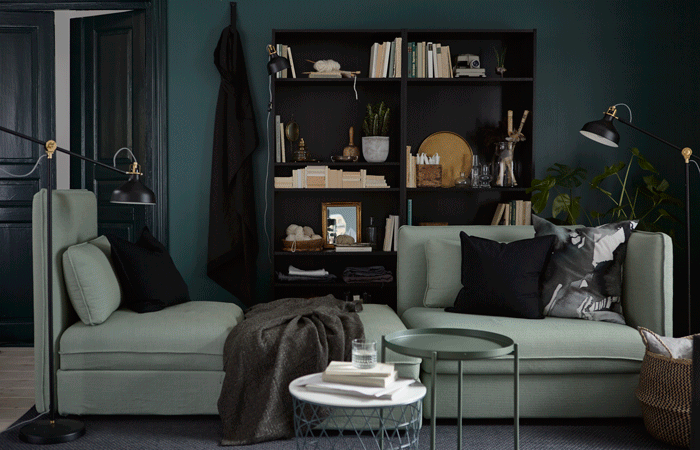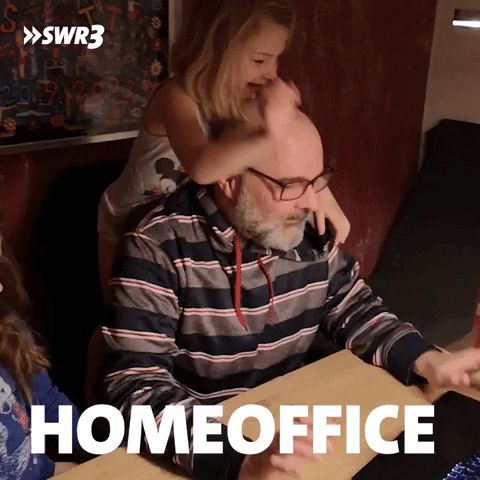Welcome to The Merchant Life – the newsletter for retailers and retail enthusiasts seeking the insider perspective of all things retail.
In this edition, we pull up our favorite Eames chair, flick the switch on our floor lamps and adjust the height on the stand desk as we discuss all things related to furniture.
Specifically, we are going to explore the furniture industry with our apparel merchandising experience. Our intention is to discover the parallels and define the differences. Then, apply valuable insights from the apparel world to furniture to drive profitable results.
Namely: accelerating speed to market, protecting margins and increasing full-price sales. Not only that, how to drop kick-ass products for customers that knock their socks off.
So, while you’re waiting for 6 to 12 weeks for that new home office desk to arrive – consume this edition of The Merchant Life.
Pass the Corbusier:
1st, Why Furniture?
We were doodling on a white board, looking at different categories of retail and applying merchandising lessons from apparel to them. We looked at everything from pets to healthcare to uniforms to beauty and others.
Furniture jumped out for two reasons: First, we’re shopping for furniture to build out our new podcast studio. No surprise, supply chain issues are delaying the arrival of our setup. Second, we got curious about how much the furniture world has changed since Liza’s buying days in 2003 at Caban, Club Monaco’s now defunct sister store.
The Caban stores, launched by Joe Mimran and then owned by Ralph Lauren, were a mixture of furniture, home decor and apparel. The perfect trifecta of private label products and designer must-haves.
Our findings are fascinating and we’re excited to share them here.
What we’re going to do first is go back.
Way back.
Back into time.
Furniture – An Overview:
We start by going back to 1837, in Grand Rapids, Michigan. William Haldane opened up one of the first furniture stores in the area and is considered the pioneer of the furniture industry in Grand Rapids.
Over time, Grand Rapids became the furniture capitol of the world.
Stores that thrive today, like Talsma Furniture, started humbly in the 1940’s and have been family owned and operated ever since. These businesses operate in Michigan alongside with global brands like Steelcase and Herman Miller.
There is a sense of tradition in how they build their products, pride beams from factories and human connection is key. For many homeowners, this is where their furniture buying experience mainly resided.
Fast forward to the 70’s, an evolution took place where IKEA became synonymous with a great customer experience that evolved over time. From kids play to Swedish meatballs and pieces that adapt to urban, condo living just as much as a suburban home at an attractive price point.
Today, the furniture industry has gone digital; from DTC brands to online marketplaces, like Amazon and Wayfair crowding your social feed.
As Riz Somji, CEO of Cymax Group, explains:
“Marketplaces such as Amazon provide access to millions of products. These marketplaces do an amazing job of making products searchable. As a third party seller, it is important to make our assortment on Amazon as complete as possible, this means adding more quality products, filling as much white space as possible and letting the Amazon marketplace and its algorithms do the hard work of getting eyeballs on the product.”
Sku intensive assortments compared to their counterparts in Grand Rapids, extensive overseas production and the constant drive to fill the so-called “endless aisle” has us scrolling for days.
The Merchandising Side of the Equation:
With that overview in mind, let’s zoom in on how exactly those mid-century modern chairs go from concept to market.
Furniture is typically sold in a collection, sometimes referred to as a range or room set.
To illustrate, consider a furniture showroom layout for a living room.
A typical collection includes:
- A three seat sofa.
- A two seat sofa.
- A chaise or arm chair.
- Coffee table or ottoman.
- Side tables.
Although accessorized or decorated with home decor, the basic collection remains static.
Pick another room in your home, guaranteed there is also a fixed recipe for that space.
Moreover, consumers don’t go in to buy items from the collection à la carte.
…they buy the whole enchilada.
Once collections are locked in, individual models are decided along with the colors of each. In turn, this determines the numbers of skus that will be carried.1
This hasn’t changed in a long time according to Karim Ladak, former Head of Furniture and Hardgoods at Caban, former Range Manager at Habitat and Founder of Potassium London – essentially, a furniture expert.
“Even 10, 20, 30 years ago, even 40 years ago, when I started my career, you still got a basic sofa, basic table, some chairs around it, and maybe an occasional chair or table as well. And that’s what we present as a room set to clients. That could be in an online magazine or online store, or it could be in in a physical store, because that’s the way that we think people live.”
When in fact, the way we live has become incredibly dynamic.
COVID Complications
When buying furniture, chances are it’s for a major life event – new addition to the family, moving in to a new home, finishing a room.
Or, a sudden and permanent WFH.
For the past two years, every room at home was re-purposed into a classroom, meeting space or closed-door office. Therefore, furniture has been used more often and differently compared to pre-COVID times. Further, people either needed to build out a home office or felt the urge to refresh their furnishings altogether.
Not surprisingly, demand exploded and stockouts plus supply chain issues kept retailers on their toes.
What does this mean moving forward?
Buying and merchandising teams typically base their forthcoming seasonal buys on historical sales data. As it stands, the historical data is way out of tune with people heading back out into the world. 2
The result…
- Retailers are off base in terms of what the customer wants now.
- Overbuying and overdevelopment of stuff the customer doesn’t want.
- Open to buy budgets locked in with no room for flexibility to react to in season shifts.
Hmmm….this sounds vaguely familiar.
Parallel with Apparel:
If we think about the parallels between apparel and furniture, some striking similarities begin to emerge:
- Both overdevelop and take a ding in their margins when clearing inventory.
- Both are not close enough to their customers.
- Both are inflexible to react to in season demand.
Overdevelopment hits differently, because of the impact on profitability. As raw material and freight costs fluctuate, protecting margins and driving full-price sales is crucial; both verticals feel this pressure. Moreover, physical prototyping and sampling is both expensive and wasteful.
What hurts furniture more is that a desk consumes more space than a dress. Take 10,000 units of excess desks and the cost of storage adds up quickly.3
The solution to the problem is simple: develop less.
But how is that accomplished?
As Karim said to us:
“Merchandising principles are the same. But in some ways, we probably haven’t gone back to basics enough in the way that we look at things. And the key thing is, within that term merchandising, is the word merchant. And people seem to forget to talk to their customer. When I was at Caban, and even before and I was at Habitat, you know, these were principles that we lived by, we wanted to know what the customer really wanted. Then at the same time, look at not just current trends, but what future trends would be. ”
Thus, getting closer to the customer is necessary. The right product at the right time equals a winning product mix.
One key difference to point out here is lead times. Hyper-fast fashion players like Shein, Boohoo and Missguided can hit lead times as fast as two weeks.4 The idea being that as soon as a trend catches fire, the brand can pick up on it and drop relevant products almost immediately.
In contrast, furniture lead times mimic that of apparel long lead times and innovation calendars – typical times here reside at the two year mark. If it takes two years to get to market, your assortment may be irrelevant before it even hits the shop floor.
It’s even MORE important to be closer to your customer if your business is slanging chairs.
Apparel Lessons for Furniture:
1st – Get Close
Getting closer to your customer can be as simple as chatting with your best customers and ask what they are buying from other places that they want to buy from you. Comp shopping and walking a trade show floor can assist in trendspotting and validating your assumptions.
Further, we find that there is a valuable (and often) missed opportunity in post-sale feedback.
This is what you normally see:
You want to capture more detailed information about why the customer made the purchase or why they are making a return.
The next step is to consolidate that information and bring it back to the planning/merchandising table.
2nd – Use Data
Here is an opportunity to get more technical and use data sources that you have within reach. For example, any information that you are collecting via a loyalty program. If you have e-commerce, then you can look at what people are searching for and what is left over in an abandoned cart.
Riz explains how Cymax Group makes use of their data advantage:
“Data can absolutely help in the design, merchandising and planning of new product. We deploy machine learning alongside strong data analytics, incorporating sales data, marketing data, fulfilment data (including damages, returns, etc.) and existing catalog data to determine the most viable product to produce. This product will ultimately reduce design time and effort, have the ability to reach maturity in a fraction of the time, provide appropriate sales and damage forecasting and provide a profitable product at launch.”
The only caveat here is that the generationally owned furniture companies may not have in house data analysts on hand. Thus, seeking out that expertise may be necessary.
3rd – Get a New Calendar
In our experience, apparel calendars become bloated with redundancies, deadlines are consistently pushed out and there is minimal accountability on critical milestones. The same can be said for other verticals including furniture.
This is not uncommon as brands are busy working WITHIN the business and lack time to work ON the business. The idea is to step back, rethink the concept to market calendar and question current ways of working.
Thus, doing an audit of each line item in the calendar with all relevant teams will identify the high priority tasks vs. failure work. Keep what’s necessary and ditch what isn’t. Almost instantly, incremental gains in speed to market are achieved.
A Quick Note on Sustainability:
In the apparel world, the conversation about sustainability is getting louder.
We would assume that it’s similar in the furniture space. It’s not hard to find brands looking to buy back used furniture, a growing re-sale market (Kaiyo is an example5) and consumer desire to re-purpose items.
However, we often hear this in response to the topic:
SusTaInABiLity Is NoT PRofitAble.
We argue otherwise.
Think of it this way – if an overdeveloped assortment of 1000 skus is chopped in half via customer feedback, no doubt there is instant impact to the P&L.
Businesses can get on board with that.
The indirect benefit? Less waste is produced.
Fold in advancements in innovative materials, 3D printing and other production methods; we can then start taking meaningful steps towards sustainability goals.
The Finishing Touch:
As a final comment, we believe that a product assortment of a brand serves as a reflection of their customer. Furniture paints a picture of how we live, work, eat and play. Apparel is a composition of how we would like to function and feel in those moments. Consumer values change over time, and as such, what we wear and bring into our homes is very much a statement.
With that in mind, brands should closely examine not just what they bring to market, but how they get there.
We believe this volume of The Merchant Life sheds light on the how.
Even though the outputs of furniture and apparel are distinct, the journey from concept to market winds upon common paths. If the paths are common, so are the obstacles: overdevelopment, distance from the customer and dated working methods.
Clearing those obstacles means a path towards improving profitability. It also opens up progress towards sustainability by eliminating unnecessary production.








